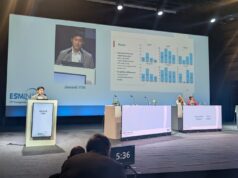
The past three decades have seen a “notable rise” in the burden of haemorrhagic stroke across the USA and this, coupled with the increasing burden of stroke more generally, represents an “evolving and substantial public health challenge” for the country to contend with. This is among the key findings from a cross-sectional analysis of the 2019 Global Burden of Disease study, which was published recently in JAMA Neurology.
Researchers Daniela Renedo (Yale School of Medicine, New Haven, USA) and colleagues aver that, while decreases in the age-standardised rates of ischaemic and haemorrhagic stroke between 1990 and 2019 “show progress”, their analysis also identified disparities across different age groups and geographic regions—highlighting the need for targeted interventions.
“Stroke is a leading cause of death and disability in the USA,” Renedo and colleagues write, outlining the study’s significance. “Accurate and updated measures of stroke burden are needed to guide public health policies.”
The researchers’ in-depth analysis of the 2019 Global Burden of Disease study—from which results were initially released in October 2020—encompassed estimates for various types of strokes, including all-cause strokes, ischaemic strokes, intracranial haemorrhages (ICHs), and subarachnoid haemorrhages (SAHs). Its primary focus centred on both overall and age-standardised estimates of stroke incidence, prevalence, mortality and disability-adjusted life years (DALYs) per 100,000 individuals.
In 2019, the USA was found to have recorded a total of 7.09 million prevalent strokes, with more of these happening in women (57.4%) than in men (42.6%). In addition, the majority of these stroke cases were ischaemic in nature (82.7%), with prevalence also including roughly 660,000 ICHs and 850,000 SAHs.
“Although the absolute numbers of stroke cases, mortality and DALYs surged from 1990 to 2019, the age-standardised rates either declined or remained steady,” Renedo and colleagues report. “Notably, haemorrhagic strokes manifested a substantial increase, especially in mortality, compared with ischaemic strokes.”
The authors go on to note that the incidence of ischaemic stroke rose by 13% across this near-30-year period, while incidence rates for ICH and SAH—two prevailing types of haemorrhagic stroke—increased by 39.8% and 50.9%, respectively.
“The downturn in stroke mortality plateaued in the recent decade [since 2010],” Renedo and colleagues continue. “There was a discernible heterogeneity in stroke burden trends, with older adults aged 50–74 years experiencing a decrease in incidence in coastal areas (decreases up to 3.9% in Vermont), in contrast to an uptick observed in younger demographics aged 15–49 years in the South and Midwest USA (with increases up to 8.4% in Minnesota).”
Delivering their concluding messages, the analysis’ authors note that declining age-standardised stroke rates over the past three decades suggest recent progress has been made when it comes to managing stroke-related outcomes.
“However,” they add, “the increasing absolute burden of stroke—coupled with a notable rise in haemorrhagic stroke—suggests an evolving and substantial public health challenge in the USA. Moreover, the significant disparities in stroke burden trends across different age groups and geographic locations underscore the necessity for region- and demography-specific interventions, and policies to effectively mitigate the multifaceted and escalating burden of stroke in the country.”











